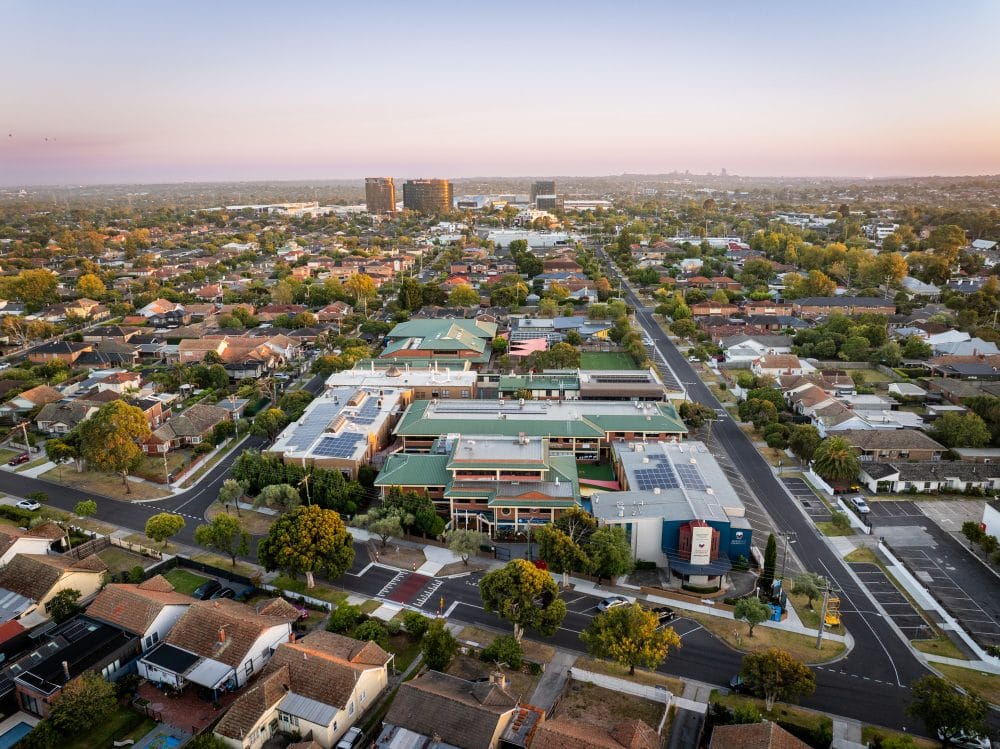
Biodiversity Project, Oakleigh Grammar, Australia
Guided by a sense of care for their surroundings and a desire to make their school more vibrant, members of the Year 11 Student Representative Council (SRC) at Oakleigh Grammar in Australia have launched a biodiversity project that’s transforming their campus, one plant at a time.
The inspiration began with a simple observation.
“What first inspired these initiatives was simply looking around the school and realising how little greenery there was,” one of the students involved in the project shared. “It felt unusual because, for a place that’s so full of energy, community, and spirit, the environment itself felt quite bare and lifeless. I wanted the surroundings to reflect the life and family that our school represents.”
That reflection sparked an idea to introduce more plants and natural spaces that would make the school not only more beautiful, but also more sustainable and welcoming.
“To me, plants symbolise care, nurturing, and connection. I wanted to create spaces that encourage those same values in our community, places where students can feel grounded, inspired, and part of something that keeps growing.”
The idea quickly found support within the SRC and among staff.
“I brought up the idea during one of our SRC meetings, and it received a really positive response. From there, a teacher helped connect me with Mrs Bettiol, our Round Square coordinator, who supported me and guided the project from its early stages,” the student explained.
As the plan evolved, so did the challenges. When a landscaper was brought in to assist, some students wondered how they could stay involved.
“At first, I wasn’t sure if my contribution would still matter,” the student explained. “But after some encouragement, I realised the project was about more than just planting — it was about growing something together as a community.”
Working with teachers and peers, the SRC made sure the project stayed student-focused, involving different classes in the design and planning process.
Already, the difference is visible.
“Since the project started, I’ve noticed a real shift in how students interact with the school environment. The areas where new plants have been added now feel more alive and welcoming, and there’s a greater sense of calm and connection among students when spending time there,” says the student.
The changes have sparked wider conversations about sustainability, too.
“It’s encouraged more people to pause, appreciate nature, and take care of their surroundings. Even teachers have commented on how the new greenery has made the school atmosphere feel more positive and engaging. It’s amazing how something as simple as plants can transform not just how a space looks, but how people feel when they’re in it.”
The students were also determined that their work would honour cultural heritage and history.
“It was really important to me that the project wasn’t just about making the school look nice, but that it carried a deeper meaning,” said the student. “This land has always been, and always will be, Aboriginal land. Choosing native plants and learning about their cultural significance was a way to show respect for the First Nations people who have cared for this Country for thousands of years.”
Through the thoughtful selection of native species, the project connects sustainability with Indigenous Australian heritage, deepening students’ understanding of place, respect, and responsibility.
As the project continues to grow, so does its impact.
“Looking to the future, I hope this project continues to grow, literally and figuratively,” the student reflected. “My goal is that even after I graduate, the school keeps building on this initiative, adding more greenery and encouraging new ideas that promote sustainability and connection.”
The biodiversity project is becoming part of Oakleigh Grammar’s identity, a living reminder that when students take ownership of their environment, they cultivate more than plants. They nurture pride, belonging, and community spirit.
“If we continue to nurture the spaces we share, we can create an environment where everyone feels a sense of pride, belonging, and care. Hopefully, this becomes part of our school’s identity — a living example of growth, respect, and the power of coming together for something meaningful.”
If you are inspired by Oakleigh Grammar, here are four steps to consider increasing biodiversity in your school:
Step 1: Engage and Get Support
Every big idea begins with a conversation. Before putting plans in motion, share your vision with the school leadership team — such as your SRC advisor, sustainability lead, or Round Square coordinator.
- Explain why greenery matters: student wellbeing, sustainability, and school pride.
- Present your initial observations (e.g., underused or bare spaces).
- Seek feedback, permissions, and identify any existing campus plans your project can align with.
Step 2: Collaborate, Plan, and Secure Funding
Once you have approval in principle, build a small working group of students, staff, and possibly parents.
- Research native and culturally significant plants that fit your local environment.
- Create a proposal including layout sketches, materials, and maintenance needs.
- Explore funding options — a sustainability grant, SRC budget, local council support, or a student-led fundraiser (such as plant sales or gold-coin dress days).
Step 3: Plant with Purpose
After the project receives the green light:
- Schedule planting days that involve a mix of classes or year levels.
- If a landscaper or groundskeeper assists, make sure students remain actively involved in decision-making and planting.
- Choose low-maintenance native species that enhance biodiversity and reflect your region’s heritage.
Step 4: Nurture, Celebrate, and Grow
Sustainability is about care over time.
- Create a maintenance roster and assign student “garden guardians.”
- Add interpretive signage to educate others about the plants’ purpose or cultural connections.
- Share progress through school assemblies, newsletters, or social media — recognising both student effort and community support.
- Reflect each term: How has the space changed? How do people feel in it? What’s next?
